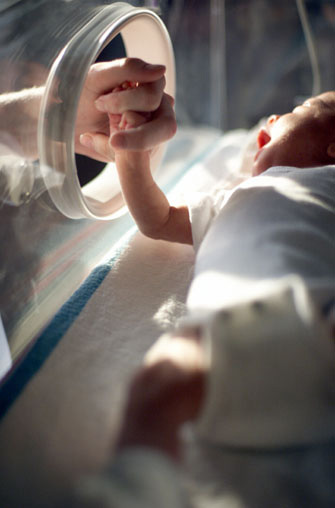As this is a rather large topic due to it's impact on many different areas -I thought I might tackle it over more than one blog post, with this being an introduction to. So it's mainly aimed at those not too familiar with the concept of using mothers instead of incubators - often called Kangaroo Mother Care (KMC) which includes Skin to Skin (STS)
Let's start by jumping back to pre-incubators. Premature baby care was at this time poor; the majority of infants were born at home, often without a doctor readily available. Preemies were just considered "weak" babies, and as a result many were considered too small to survive. In general doctors were "in no position to extend their direct responsibility for the newborn", so perhaps not surprisingly death rates were as high as 85%.
Around the turn of the 20th century, America's first incubator hospitals for premature infants were built. Alexandre Lion had developed the first incubator suitable for hospital use; but they were complicated, expensive, and the technology was hard to sell to hospitals. To get round this Lion displayed the incubators and their premature residents at fairs and amusement parks, charging an admission fee to offset the cost of running the equipment.
Survival rates soared; in part because of the clean, warm environment and appropriate medical care - but also because after seeing the techniques used at the hospitals, parents were better able to care for their own premature infants. Incubator hospitals challenged many of the social norms of the time, but ultimately were designed to make a very large profit.
From this point, research surrounding vulnerable infants, (and the development of incubators) was based on one fundamental assumption; that the incubator was the best way to care for a premature or sick infant. Today developments are still constantly underway to try and create an ever more womb like environment; controlling oxygen levels and other vital systems, with an array of sensors, monitors and alarms. Nowadays they are highly advanced pieces of equipment, costing in the region of £30,000.
But what if this initial assumption was wrong? What if the whole foundation was based upon an assumption that was massively flawed? What if, creating a womb like environment wasn't the
optimum way to care for a baby that had been born and something else could increase survival rates more?
Dr Nils Bergman has been researching, practising and lecturing on KMC for twenty years and firmly believes an infant should not be separated from his mother. What Bergman discovered is that separation causes something called the "protest - despair response"; the protest response is one of intense activity seeking reuniting, the despair response that follows, is a withdraw and survive response - temperature and heart rate decrease, caused by a massive rise in stress hormones. When reunited with mother, there is conversley a rapid rise in heart rate and temperature.
The "protest-despair response" was first described in human orphans after WWII, and was subsequently studied in monkeys and then in many other mammals. "Separation distress calls" have been documented in rats and very similar distress calls have been identified in human infants. Cot babies make ten times as many cry signals as babies held skin to skin, and Bergman believes there is not only physical but neurological implications to separating the dyad.
There is compelling evidence a baby should be with mum, and that in fact she is the perfect incubator. The infant's temperature sits within a very narrow range, because mum's core temperature rises and fall as her baby requires - so much so STS has been proven better than an incubator for rewarming hypothermic infants. KMC has also been shown to improve oxygenation, to the extent that STS is used successfully to treat respiratory distress. Baby's breathing becomes regular, stable, and is coordinated with heart rate.
Isn't this risky? is the first question people ask. The fact is that in over seventy studies. not a single adverse outcome has been reported for KMC. On the contrary, time and again KMC infants have improved outcome over traditional methods of care - something widely recognised in available scientfic literature.
Why isn't it practised? is usually the next. But, as I promised to keep this a short introduction - I think that's for another blog entry!



0 comments:
Post a Comment